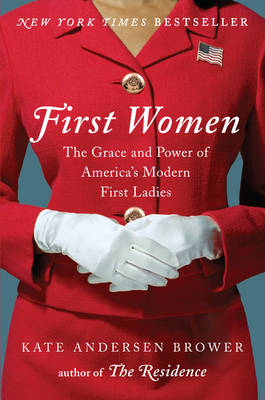Reviewed by Amber (The Literary Phoenix) on
In a book that really should be a celebration of feminine dignity and power, it feels petty and small. It cast a shadow over the entire book for me. Brower mentioned multiple times how Jackie O. or Betty Ford or Nancy Regan were their husband’s greatest supporters and “her husband this” or “her husband that”. … The framework for these women’s stories felt outdated and failed to credit them as individuals, instead chaining accomplishments to those related to their husbands or children. Every mention of Michelle Obama was that she hated the White House, created fatal etiquette mistakes, and made problems for the staff and her husband by being unhappy. Similarly, Hillary Clinton’s narrative mostly discusses her support of Bill or raising Chelsea, only mentioning her career as an example of First Women on “both sides of the spectrum”.
While I am not close enough to any of these women to claim whether or not Brower’s views are accurate, it does color her narrative. Because I was still interested in the subject, I persevered and tried to read between the lines and ignore the ugly shadow. Brower’s personal commentary tainted the non-fiction in a way that was impossible to completely ignore, and it left a sour taste in my mouth.
Ultimately, Brower showed the greatest respect for those first ladies who were graceful or sophisticated. She says kind things about Ladybird Johnson, Jacqueline Onassis-Kennedy, and Betty Ford. She uses Hillary Clinton’s words to defend Nancy Reagan’s extravagant china purchase ($200,000 for a complete set of china for the White House)… and she criticizes the “Marie-Antoinette” expenses Michelle Obama caused when she family took a brief vacation. … Honestly, it is hard to talk about any of the things I learned about these other First Ladies without mentioned some sort of side-comment Brower made about Michelle Obama. The one kind thing she says was that Michelle was the only one since Jackie who came closest to becoming a fashion icon. Not in the same caliber, of course, but there is a slight nod of respect to this one small accomplishment. Hillary Rodham Clinton, additionally, is criticized repeatedly for her lack of femininity and not changing her last name, including blaming her in this way for some of Bill Clinton’s early losses.
Since Jackie O., First Women have all had causes that the Office of the First Lady pursues while in the office. While the projects lately have focused on children (both Bush administrations fought for childhood literacy, Michelle Obama’s focus on childhood obesity, Melania Trump’s cyberbullying) others have focused on mental health (Rosalynn Carter), drug awareness (Nancy Reagan), women’s rights (Betty Ford) and others. I really, really would have liked to hear more about these projects and each of the first women and their cultural contributions. The content focuses more on their relationships with one another, the White House staff, and their adjustments to living in the White House itself and under the lens of the country. There’s a little conversation about some of their relationships with one another, and those moments are nice, but event planning and garden tours are very low on the list of contributions these important women have made to our society.
Organizationally, First Women is all over the place. Since the book opened with a visit between Hillary Clinton and Jackie Kennedy, it was clear early on that this book would not be presented chronologically. Topics were chaotic as well, being explored with one First Lady, then the book would move on to something else, then it would circle back again to that conversation again with another First Lady.
While this book isn’t boring, and there’s an appeal to it as a way to access these women, the bias shades the stories and their contributions are not outlined as clearly as they could have been. While I wouldn’t tell interested parties to avoid First Women, I don’t know that I would recommend it either. There are moments of interest, but I just wasn’t crazy about the formation of the narrative. Perhaps it was too broad a topic, and going forward I think I would seek out individual biographies rather than a collection like this one.
Reading updates
- Started reading
- 7 January, 2020: Finished reading
- 7 January, 2020: Reviewed
